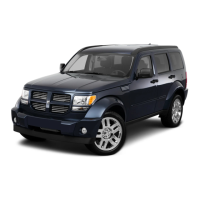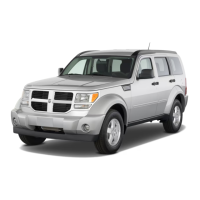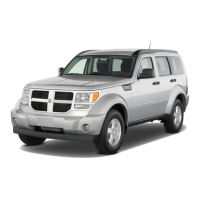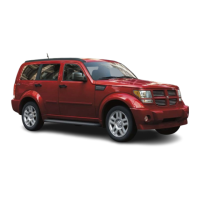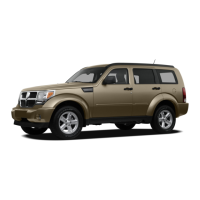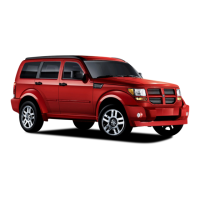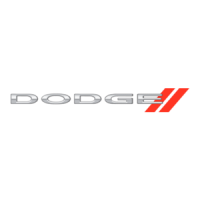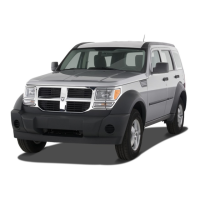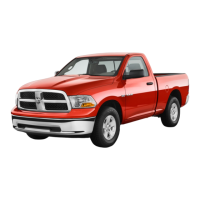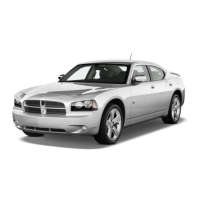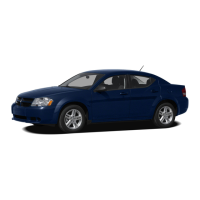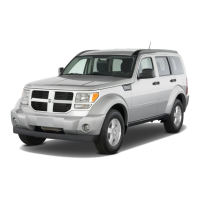
Do you have a question about the Dodge Nitro 2010 and is the answer not in the manual?
| Brand | Dodge |
|---|---|
| Model | Nitro 2010 |
| Category | Automobile |
| Language | English |
Congratulations on your new vehicle and how to use the owner's manual.
Utility vehicles have a higher rollover risk; avoid unsafe maneuvers.
Guidance on using the table of contents and index for information.
Explains warnings against dangerous procedures and cautions against damage.
Location and importance of the VIN.
Warning against modifications affecting safety and roadworthiness.
Information about the vehicle's double-sided keys and key code.
How the steering wheel lock works and how to engage/disengage it.
Information about the immobilizer system that prevents unauthorized operation.
How the alarm monitors doors, liftgate, and ignition for unauthorized access.
Interior lights turn on when doors are opened or unlocked via RKE.
System for locking/unlocking doors and liftgate remotely.
Information on inside and outside mirrors, including automatic dimming features.
Details on the voice-activated, hands-free communication system.
System for controlling vehicle features using voice commands.
Information on manual and power seat adjustments and active head restraints.
Operation of headlights, parking lights, and turn signals.
Operation of front and rear wipers and washers.
How to adjust the steering column for comfort and safety.
Operation and safety precautions for cruise control.
System that senses obstacles and provides warnings for parking assistance.
Information on programming the HomeLink system.
Operation of the power sunroof, including express and manual modes.
Features that remain active after the ignition is turned off.
Information on the vehicle's 12-volt power outlet.
Information on front and console storage compartments.
Details on cargo light and tie-down hooks.
Information on rear window wiper/washer and defroster.
Overview of the instrument panel components and their locations.
Detailed illustration and description of the instrument cluster gauges and indicators.
Detailed descriptions of various instrument cluster indicators and gauges.
Information on the driver-interactive display for compass and trip data.
Features and displays of the driver-interactive EVIC system.
Operation instructions for the radio and CD/DVD changer.
Operation instructions for the AM/FM radio and CD player.
Operation instructions for the radio, CD player, and Sirius radio.
Steps for starting the vehicle, including normal and cold weather procedures.
Use and installation of the engine block heater.
Information on automatic transmission operation and features.
How to operate the four-wheel drive system and transfer case.
Advice for driving on paved roads, considering vehicle characteristics.
Guidelines for off-road driving, including using 4L/4LO and driving through water.
Information on the power steering system and fluid check.
How to apply and release the parking brake, and related warnings.
How the ABS system aids in maintaining vehicle control during braking.
Overview of advanced electronic brake systems like ESP, TCS, BAS, ERM.
Information on tire markings, load capacity, and safety.
Recommended gasoline octane ratings and types for different engines.
How to activate and use hazard warning flashers during an emergency.
Actions to take when the engine overheats to prevent damage.
Instructions and safety precautions for changing a tire.
Safe procedures for jump-starting a vehicle with a discharged battery.
Proper procedures and precautions for towing the vehicle.
Identification of components in the 3.7L engine compartment.
Identification of components in the 4.0L engine compartment.
How the OBD II system monitors vehicle performance and emissions.
Legal requirements for emissions control system inspection.
Importance of using genuine MOPAR parts for maintenance.
Benefits of using authorized dealer service.
Required maintenance services and their importance for performance.
How to check and change engine oil, including oil selection.
When and how to replace the engine oil filter.
Importance and replacement of the engine air cleaner filter.
Information on the maintenance-free battery.
Recommended service for the air conditioner.
Periodic lubrication of body pivot points.
Cleaning and maintenance of wiper blades.
How to check and refill the washer fluid reservoir.
Importance of a properly maintained exhaust system for carbon monoxide prevention.
Warnings and procedures related to the cooling system and engine coolant.
Periodic inspection of brake system components for performance.
Location and description of fuses in the Totally Integrated Power Module.
Location and identification of fuses, mini fuses, and relays.
Bulb numbers for interior and exterior lighting.
Step-by-step instructions for replacing various bulbs.
Approximate fluid capacities for the vehicle.
Recommended fluids, lubricants, and parts for optimal performance.
Specific fluid and part recommendations for the engine.
Specific fluid and part recommendations for chassis components.
Scheduled maintenance for emissions control systems to ensure proper function.
Overview of scheduled maintenance services based on time or mileage.
Details on required maintenance intervals for optimal vehicle performance.
